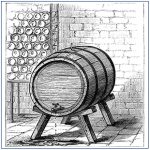Criminal Jurisdiction on Indian lands
There are 3 types of tribal land. First we have the tribal trust lands, which is land that is held by the tribe itself and usually where the tribal headquarters is located. Tribal trust land may also be where schools, medical facilities, and businesses are located. Oftentimes, hunting and fishing land is also on tribal trust land. This is land owned by the tribe, and they’re held in trust by the United States for the benefit of the tribe.
Joel West Williams, a Staff Attorney at the Native American Rights Fund and a citizen of the Cherokee Nation, grew up in Little Rock, Arkansas. He obtained degrees in Psychology and Religious Studies from Naropa University. At Naropa, he was awarded the President’s Leadership Scholarship and his senior project in the religious studies department focused on Cherokee history and religion.
Joel attended Widener University School of Law, where he was a student attorney at the environmental law clinic and represented citizen groups pursuing lawsuits under the Clean Air Act, Clean Water Act, and Administrative Procedures Act. He was also awarded a certificate of achievement by Joseph R. Biden.
We are extremely pleased to have someone of his background speak on such an important issue. In this CLE video clip, Joel discusses Criminal Jurisdiction on Indian lands.
The second type of land are the allotments. Reservations were divided up into individual parcels of land and the United States held those in trust for the benefit of individual Indians. There are also restricted fee lands, those are mostly in Oklahoma, and serve as allotments.
The third type of land you often find within an Indian Reservation are the non-Indian fee lands. During the allotment period, if there were leftover parcels of land that went to non-Indians, those were considered fee patented to those people. Now known as, non-Indian fee lands.
These are the 3 types of land on an Indian reservation. When a crime arises, the type of land it occurs on is very important in determining the proper action to be taken. Generally, when a crime has been committed in Indian country, it can come under federal jurisdiction, tribal jurisdiction, or state jurisdiction. At times, federal and tribal jurisdiction will run concurrent.
Focusing on lands within the reservation, which government has jurisdiction on Indian lands within Indian country depends upon the political identity of the perpetrator and the victim. Tribes have jurisdiction over Indians on Indian land, which includes member and non-member Indians.
There are two caveats to these considerations to tribal jurisdiction on tribal lands. First, consideration is that the U.S. Constitution doesn’t apply to Indian tribes. Tribes are preconstitutional government, and considered extra-constitutional government, because they were not a party to the U.S. Constitution it doesn’t apply to an Indian tribe. Therefore, during criminal proceedings, the Bill of Rights doesn’t apply during that tribal criminal proceeding. In order to fill this void of the Constitution not applying in Indian country, Congress in 1968 passed the Indian Civil Rights Act. The Indian Civil Rights Act, statutorily applied most of the provisions of the Bill of Rights to tribal court proceedings in criminal matters.
Not all rights have been adopted, most notably there is no right to counsel in tribal court. Additionally, the Indian Civil Rights Act limited tribal court sentencing authority. Now, in tribal courts on criminal matters, tribal court only has the authority to sentence a person to one year and a five thousand dollar fine. One exception exists, and that’s where under the Violence Against Women Act for domestic violence offenses tribes can increase that sentencing authority.
Going back to the colonial days, Indian country was the sole province of tribes. Shortly after the Revolution, the federal government passed a statute, that extended federal criminal jurisdiction over non-Indians committing crimes against Indians in Indian country. Meaning non-Indians in Indian country committing crimes against Indians would become federal jurisdiction. In 1817, federal criminal jurisdiction was statutorily extended to include crimes by both Indians and non-Indians against non-Indian people.
The next development in federal jurisdiction was the Crow case of 1883. Basic facts of the case were that Crow Dog killed Spotted Tail on the Rosebud Sioux Reservation and was convicted of murder in tribal court. Crow Dog was given a traditional tribal punishment that included reparations and other tings to Spotted Tail’s family. Federal authorities were unhappy that Crow Dog did not get the death penalty, which is not a traditional tribal punishment, and charged him in federal court for the murder. In Dakota territorial court, Crow Dog was convicted of murder and sentenced to death.
Eventually, the case went before the U.S. Supreme Court which held that General Crimes Act did not include crimes by Indians against Indians in Indian country. After the Crow Dog case, Congress passed the Major Crimes Act, which extended federal jurisdiction into Indian country over 7 major crimes. The 7 major crimes, as described by the Major Crimes Act are: murder, manslaughter, rape, assault with intent to kill, arson, burglary, and larceny.
Another important case that came about in 1886, the Kagama vs. United States. Here the court held there that this federal intrusion into internal tribal affairs was justified by the dependent status of tribes. Indians were considered wards of the United States.
For the non-Indian on Indian lands that commits a crime against an Indian, is exclusively a federal case. Non-Indians against another non-Indian criminal cases on tribal lands, becomes the jurisdiction of the state. In criminal cases where there is no victim, yet perpetrated by a non-Indian, the jurisdiction remains with the state.








